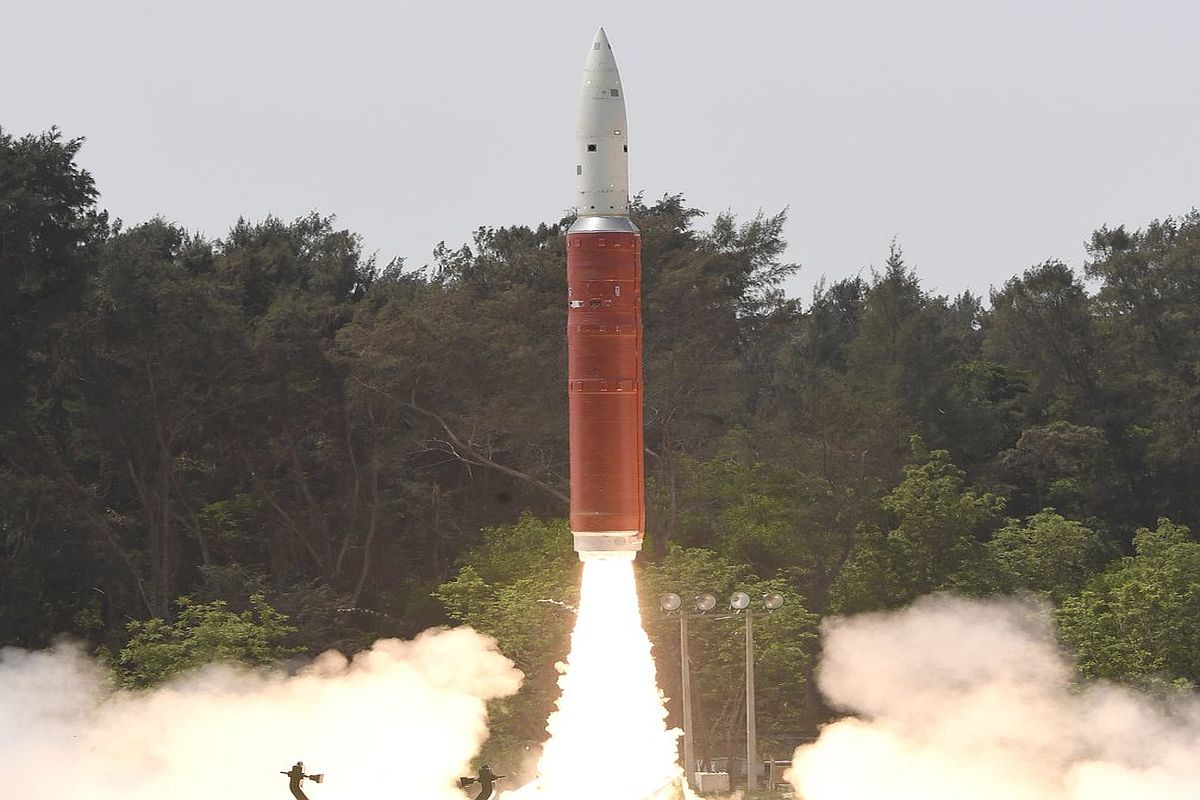Congress committing dacoity on rights of OBCs, SCs, STs: PM
“Wherever it (Congress) can do it, it will try to loot the claims of the SCs, STs and OBCs and give them to others,” said Modi.
NASA said the creation of orbital debris has led to new dangers for astronauts aboard the International Space Station (ISS).

DRDO successfully launched the Ballistic Missile Defence Interceptor missile in an Anti-Satellite ASAT missile test. (Photo: Twitter | @PIB_India)
Amid warnings and concerns of space debris following India’s anti-satellite (ASAT) weapons test, the head of National Aeronautics and Space Administration (NASA) on Tuesday branded India’s destruction of one of its satellites a “terrible thing” that had created 400 pieces of orbital debris and led to new dangers for astronauts aboard the International Space Station (ISS).
Jim Bridenstine was addressing employees of NASA after India shot down a low-orbiting satellite in a missile test to prove it was among the world’s advanced space powers.
Not all of the pieces were big enough to track, Bridenstine explained. “What we are tracking right now, objects big enough to track – we’re talking about 10 centimetres or bigger – about 60 pieces have been tracked.”
Advertisement
The satellite was destroyed at a relatively low altitude of 300 kilometres, well below the ISS and most satellites in orbit.
But 24 of the pieces “are going above the apogee of the International Space Station,” said Bridenstine.
“That is a terrible, terrible thing to create an event that sends debris at an apogee that goes above the International Space Station,” he continued, adding: “That kind of activity is not compatible with the future of human spaceflight.”
“It’s unacceptable and NASA needs to be very clear about what its impact to us is.”
The US military tracks objects in space to predict the collision risk for the ISS and for satellites. They are currently tracking 23,000 objects larger than 10 centimetres.
That includes about 10,000 pieces of space debris, of which nearly 3,000 were created by a single event: a Chinese anti-satellite test in 2007 at 530 miles from the surface.
As a result of the Indian test, the risk of collision with the ISS has increased by 44 per cent over 10 days, Bridenstine said.
But the risk will dissipate over time as much of the debris will burn up as it enters the atmosphere.
Hours after Prime Minister Narendra Modi last week announced that India had become the fourth country in the world to become a space superpower capable of taking out an enemy satellite in space, the US expressed concern over the issue of space debris.
According to a report in Reuters, acting US Defense Secretary Patrick Shanahan had warned any nation contemplating anti-satellite (ASAT) weapons tests like the one India carried out on Wednesday that they risk making a “mess” in space because of debris fields they can leave behind.
In the Mission Shakti operation, the indigenously-built anti-satellite ASAT missile successfully destroyed a target satellite in the Low Earth Orbit (LWO), the PM announced.
Though the message was clear to all of India’s adversaries, the PM assured the global community that the technology will not be used “against anyone”.
The Ministry of External Affairs in its statement said that India’s space capabilities do not threaten any country nor are they directed against anyone.
The MEA had also said the test was done in the lower atmosphere to ensure there is no space debris.
The government also came out with a 10-point explainer to say the anti-satellite missile test was carried out to verify India’s capability to safeguard space assets and that it was not directed against any country.
Advertisement